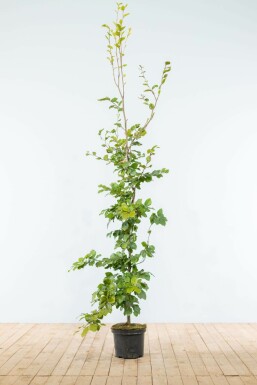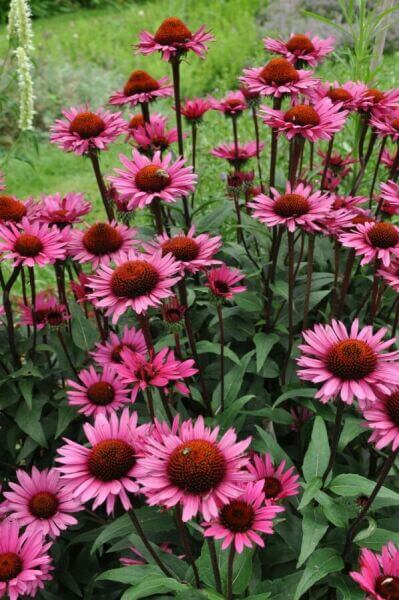Best Hedging Plants For Front Yards
Best Hedging Plants For Front Yards
Blog Article
Hedge Plants For Container Gardening
Boost your garden's allure with lush hedge ranges such as Yew (Taxus), Thuja, Laurel, Photinia, and Bamboo, commemorated for their structural integrity and environmental benefits.
Yew and Thuja supply evergreen coverage and winter season resilience, while Laurel provides quick growth and broad, fragrant leaves.
Photinia includes seasonal charm with its lively red foliage, and Bamboo lends a low-maintenance, peaceful atmosphere.
These hedges improve air quality, decrease sound, and create tranquil, personal areas.
Proper planting, spacing, and maintenance guarantee energetic development and environmental consistency.
Check out how these lush varieties can elevate your garden's beauty and well-being.
Key Takeaways
Transform Your Garden With Lush Hedge Ranges
- Select Yew for its thick, evergreen growth and unrivaled durability.
- Go with Laurel for its fast growth and broad leaves, making sure fast privacy.
- Choose Photinia for its lively seasonal foliage, which turns a striking dark red.
- Utilize Bamboo for a low-maintenance, winter-hardy hedge with aesthetic appeal.
- Area plants 2-3 per meter and prune frequently for optimum development and health.
Popular Hedge Plants
When transforming a garden with lush hedge varieties, it's necessary to consider popular hedge plants such as Yew, Thuja, Laurel, and Photinia due to their distinct qualities and benefits.
Yew (Taxus) is highly esteemed for its longevity and dense, green growth, making it a prime choice for enduring landscapes.
Thuja is kept in mind for its evergreen foliage and robust winter season strength.
Photinia includes seasonal vibrancy with red leaves that darken with time, developing vibrant visual appeal.
Laurel provides fast growth and fragrant, broad leaves, perfect for quick personal privacy.
In Addition, Bamboo is an exceptional option for ambiance, offering a low-maintenance, winter-hardy option that enhances the garden's visual with its sophisticated, swaying walking sticks.
These selections cater to a range of horticultural requirements and preferences.
Benefits of Garden Hedges
Garden hedges use a multitude of advantages, making them a valuable addition to any landscape. These natural barriers are affordable to implement and supply considerable wind protection, boosting air flow and contributing to sound reduction. The thick foliage of hedges like Thuja and Beech guarantees privacy by blocking exposure, developing a tranquil and secluded environment.
Hedges likewise play an important role in microclimate guideline, offering a steady environment that promotes plant development and reduces temperature level variations. Their intricate leaf structures filter toxins, improving air quality and adding to a healthier garden community.
Moreover, hedges stand out in sound reduction, soaking up and deflecting sound waves to lower ambient sound levels. This double performance of offering both acoustic and visual privacy improves the overall serenity and visual appeal of any garden.
Planting and Maintenance Tips
For an effective hedge, careful preparation of the planting area is important. Make sure the soil has proper pH and drainage to support strong root advancement.
Area the plants appropriately for the selected types. Water the hedge regularly during its initial development stage, adjusting as needed with seasonal changes.
Carry out a organized pest control and disease prevention technique, utilizing natural or chemical treatments when required. Routinely check for aphids, termites, and fungal infections.
Apply mulch to maintain moisture and suppress weeds. Seasonal pruning promotes dense development and air blood circulation, necessary for plant health.
Following these standards will help you cultivate a vibrant, well-kept hedge that improves the charm of your garden.
Spacing and Trimming Standards
Spacing and Cutting Standards
Correct spacing and trimming are important for cultivating healthy, aesthetically appealing hedges. Appropriate spacing ensures each plant gets enough nutrients, light, and air flow.
Follow these guidelines for ideal hedge maintenance:
- Spacing: Position hedge plants 2-3 plants per meter to encourage robust growth.
- Pruning Methods: Regular pruning is important for preserving desired hedge height and shape. Trim brand-new development in summer season and cut down older wood during winter.
- Seasonal Care: Adjust cutting schedules and approaches according to seasonal requirements to guarantee plant health.
- Hedge Height: Routinely monitor and trim to keep the desired hedge height and achieve consistent looks.
Adhering to these actions will ensure your hedge flourishes, enhancing both the appeal and performance of your garden.
Choosing the Right Hedge
Choosing the Right Hedge
Picking the proper hedge includes evaluating factors such as fully grown height, foliage density, and ecological resilience. Effective hedge plant choice requires comprehending each types' growth characteristics and site-specific flexibility.
For example, Yew (Taxus) uses outstanding longevity and dense development, Additional reading while Thuja is notable for its winter resilience. In addition, considering upkeep requirements is important; fast-growing species like Laurel or Privet demand routine trimming, whereas low-maintenance choices like Bamboo or Ivy may be more effective for those seeking very little upkeep.
Ecological elements such as soil type, light availability, and moisture conditions need to also assist the selection process. This careful technique ensures the selected hedges will grow, offering both functional and visual advantages to the garden landscape.
Delivery and Planting Recommendations
To ensure your hedge plants flourish, they must be provided by specialized couriers and planted immediately upon arrival.
Follow these necessary steps for successful planting:
- Soil Preparation: Enhance the soil with natural matter to improve drainage and nutrient content.
- Planting Depth: Produce a trench two times the width and equivalent to the depth of the root ball.
- Watering Techniques: Water thoroughly after planting, keeping the soil consistently moist however not filled.
- Mulching: Use a layer of mulch to keep moisture and suppress weeds.
Consumer Assistance and Service
Offered the essential role of prompt support in horticultural pursuits, our client support group is readily available 6 days a week through telephone, email, and social media to use professional recommendations and quickly address any issues. Their commitment to fast reaction times ensures consumer fulfillment by dealing with questions associated with plant health, optimal planting approaches, and maintenance schedules.

Telephone
This detailed support group, reinforced by an outstanding 9.3/ 10 consumer ranking, highlights our commitment to enhancing the gardening experience for each customer.
Frequently Asked Questions
For How Long Does It Consider Hedge Plants to Develop?
Hedge plants generally require one to three years to become completely developed, with the specific period differing by types and growing conditions.
Effective care during this crucial period is important for robust growth. Consistent watering, alert weed control, and proper fertilizer application are essential in promoting strong root advancement.
For instance, fast-growing species like Laurel may establish more quickly, while slower-growing varieties such as Yew may take longer. Thorough upkeep accelerates the establishment procedure, leading to thick and healthy hedges.
What Are the Best Hedge Plants for Privacy?
The concern of the very best hedge plants for privacy includes assessing evergreen and deciduous choices.
Evergreen hedges like Thuja, Laurel, and Cypress supply year-round coverage, ensuring constant personal privacy.
On the other hand, deciduous hedges such as Beech offer seasonal personal privacy, shedding leaves in cooler months.
Key upkeep ideas for privacy hedges consist of routine trimming, fertilizing in spring, and correct spacing-- usually 2 to 3 plants per meter.
Additionally, constant watering and persistent weed removal are vital for promoting healthy, dense growth.
Can Hedge Plants Attract Wildlife to My Garden?
Yes, hedge plants can bring in wildlife to your garden by offering necessary benefits like shelter, food, and nesting websites, consequently enhancing regional biodiversity. Yew, holly, and laurel are excellent for drawing in birds, while ivy supports a range of bugs.
Nevertheless, it's essential to keep in mind that there are some drawbacks, such as increased upkeep to handle pests and routine maintenance. Carefully choosing and preserving hedge varieties can help stabilize these benefits and disadvantages, eventually fostering a sustainable and dynamic environment in your garden.
Are There Any Blooming Hedge Plants Available?
Yes, there are flowering hedge plants available that can improve the appeal of your garden.
For example, Elaeagnus, also called Olive Willow, produces aromatic white flowers in the fall, adding a touch of elegance.
Photinia, another popular choice, showcases lively red leaves that grow into a rich green, creating a vibrant visual result throughout the seasons.
To make sure these plants thrive, it's vital to practice correct pruning methods and seasonal maintenance, such as trimming brand-new development in the summer and cutting back in the winter.
These steps will assist preserve the health and visual appeal of your blooming hedges.
How Do I Avoid Pests in My Hedge Plants?
To prevent pests in hedge plants, utilize natural insect control techniques and maintain correct hedge care. Introduce advantageous insects like ladybugs, which victimize hazardous pests, to develop a balanced ecosystem.
Frequently examine your hedges for signs of invasion and immediately eliminate any afflicted parts to prevent the spread. Make sure the health of your hedges by applying well balanced fertilizers and offering appropriate water.
Use mulching to maintain soil moisture and correct spacing to decrease plant tension and promote robust development. These practices jointly help in reducing pest concerns and keeping a healthy hedge.
Conclusion
In essence, selecting the best hedge varieties such as Yew, Thuja, and Laurel can change any garden into a relaxing haven. These plants provide year-round plant, improve aesthetic appeal, and deal practical benefits like sound reduction and wind protection.
Correct planting methods, accurate spacing, constant watering, and seasonal trimming are vital for optimum growth.
Trustworthy delivery services and skilled client support make sure a seamless experience from purchase to planting, making it easier than ever to elevate your outside space.
Garden hedges offer a plethora of benefits, making them an important addition to any landscape. These natural barriers are affordable to carry out and offer significant wind security, enhancing air flow and contributing to noise decrease. The thick foliage of hedges like Thuja and Beech ensures personal privacy by obstructing exposure, developing a peaceful and secluded environment.

Pruning Methods: Routine pruning is necessary for keeping preferred hedge height and shape. Cut new growth in summer and cut back older wood during winter season.
Report this page